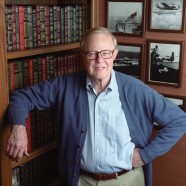
Building a Superorganism is Chapter Five in Dr. Peter Corning's ground breaking work: Superorganism. Superorganism is a cautionary tale of the ancient human societies that have vanished – many of them as victims of ecological disasters. To purchase Superorganism in its entirety, go to the local bookstore nearest you, or online via Cambridge University Press or Amazon.
Building a Superorganism
“What Is to Be Done?” This provocative question is the title of a famous pamphlet published in 1902 by the Russian revolutionary, Vladimir Lenin, while he was living in exile in Germany. (His title was taken from an earlier Russian novel.) The “burning question,” as Lenin put it, was how to achieve a communist society in Russia. By then it was clear that it would not arise “spontaneously” via class conflict, as the great theorist Karl Marx had supposed. Lenin saw the need to create an organized political party to serve as a revolutionary “vanguard.” This idea proved to be a turning point. Lenin’s pragmatic political strategy would be adopted by communists everywhere in the twentieth century, and it played a decisive part in the Russian, Chinese, and Cuban revolutions alike.
The old saying that “the operation was a success, but the patient died” may be applicable here. Lenin’s plan for achieving political power was brilliantly successful, but the Communist models of human nature and a complex human society were deeply flawed. Radical economic and social equality and an economy organized around small voluntary “communes” never had a chance in a large industrial society. Once in power, the Communists moved quickly to do exactly the opposite. They imposed rigid centralized planning on a tightly organized, hierarchical economic system. Dubbed a “command economy” by Western economists, it worked for a while, but the patient eventually died.
Now it’s time to pose Lenin’s historic question once again. If pursuing the current economic and political status quo may well amount to an unwitting suicide pact, or the road to World War Three, what is the alternative? If the utopian, “free market” capitalist ideal is not the answer, and Ayn Rand’s model is a con job on behalf of the favored few, we need to go back to the drafting table. And this time, because the stakes are so high, we need to get it right.
Let’s begin with some biological fundamentals about the role of cooperation and synergy in evolution, as well as the rise of complexity in the natural world over time and the so-called “major transitions” in evolution, especially the emergence of superorganisms. (Again, see the detailed discussion in my 2018 book: Synergistic Selection: How Cooperation Has Shaped Evolution and the Rise of Humankind).
The traditional view of evolution, dating back to Darwin himself, is that there is a ruthlessly competitive “struggle for existence” (to repeat Darwin’s catch phrase) – or “nature, red in tooth and claw” in the oft-quoted poem by Alfred, Lord Tennyson. Call it the high testosterone model of evolution.
In the twentieth century, a modernized version of this paradigm, widely known as neo-Darwinism, shifted the theoretical focus to the competitive machinations of “selfish genes,” according to the biologist/popularizer Richard Dawkins. In his best-selling book, The Selfish Gene (1989/1976), Dawkins famously claimed that “We are survival machines – robot vehicles blindly programmed to preserve the selfish molecules known as genes” (p. ix). Dawkins concluded: “I think ‘nature red in tooth and claw’ sums up our modern understanding of natural selection admirably.”
To read Superorganism in its entirety, go to your local library, or to the local bookstore nearest you, or you can purchase the book online via Cambridge University Press or Amazon.









